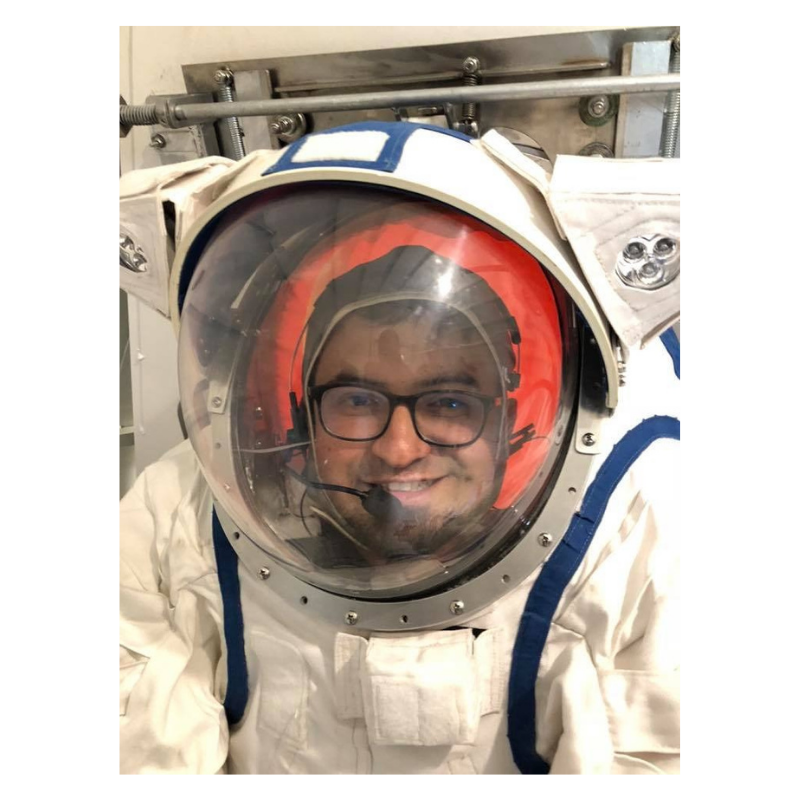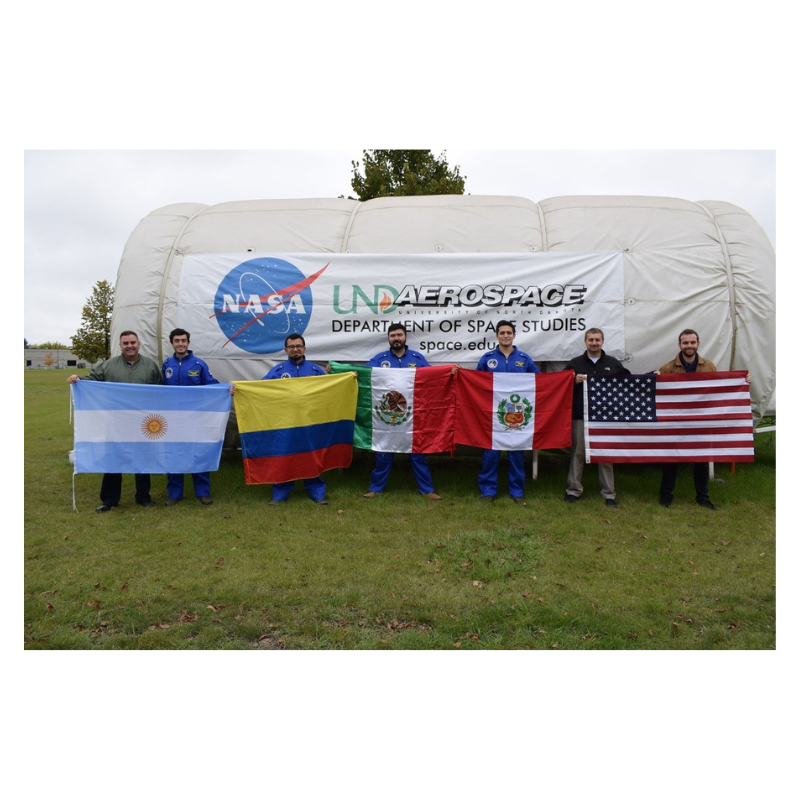Bogotá engineer, David Mateus is an "analog astronaut", a title that he has carried out in different habitats such as the Mars Desert Research Station on 3 missions and in the Moon / Mars Analogue Habitat, as part of the team in the first international mission organized by the University of North Dakota and NASA.
There are two types of environments in which simulations of space travel-conditions are developed. Some are analog locations and the others are analog stations. Analogous locations are places that can simulate a space environment, for example the Mars research station that is located in the Utah desert. It is in an environment that simulates Mars and allows the undertaking of certain geological activities far from civilization. It also replicates the risk of isolation, in the event of an emergency it will be very difficult to access medical service, so it is necessary to respond to those unforeseen events on-site just as it would be done in space.
In analogous stations, such as the one owned by the University of North Dakota, the risks are more controlled. The greatest challenges are due to the psychological effects that isolation and confinement can generate.

Bogotá engineer, David Mateus is an "analog astronaut". Photo courtesy of David Mateus
On April 24, Mateus will participate in the first international mission with a completely Latin crew aboard the Mars Ocean Analogs which will serve to simulate a Martian analog. This a project led by Reid Stowe, the person who holds the record for the longest trip in history, 1000 days without stopping to refuel on land.
Analog astronaut Hernán David Mateus Jiménez sat down for an interview with the Bogotá Portal. He is getting ready to set sail with the Mexican Danton Bazaldua, the Argentine Marcos Bruno and the Peruvian Luis Díaz.

Photo courtesy of David Mateus.
Portal Bogotá: At what point did you start to get involved with space projects?
David Mateus: My interest in space was always present in my life, but when I started studying at university there was no option to study aerospace engineering, but being a mechatronics engineer is not far from space. Space needs specialists from all areas; engineers, doctors, psychologists, artists. I began to connect with space thanks to a scholarship that I obtained to go to Russia where I had the opportunity to interact with many people in the aerospace sector who began to guide me and from there I began my career in space sciences.
P.B: Of all the challenges involved in a simulation like this, which one do you think is the greatest?
DM: One of the biggest challenges, and the reason why this type of simulation has become relevant, is the human factor: we have conquered other planets but we have done it with machines. Recently robots have arrived on Mars but when we send humans there will be additional difficulties. the whole point of these missions is to find what those problems could be.
P.B: What information do you hope to collect from this experiment?
D.M: We’ll carry out a package of experiments divided into areas, we have a package of psychological experiments mainly led by the teams from Mexico and Peru, and we also carry out some Remote Sensing and navigation experiments. We are also interested in the scope of dissemination because it seems important to us to stimulate space science education in Latin America.
P.B: What will the travel itinerary be?
DM: We arrived in Boca Chica (Texas) on April 24, we are going to set sail from a place near the Space X facilities. We are going to set sail from there because we have certain approaches with the company so that this analog is analyzed as a possible environment training for future astronauts. We are going to sail across the Gulf of Mexico to Miami. We have approximate dates of arrival but it all depends on weather conditions.

Mars Ocean Analogs. Photo courtesy of David Mateus
P.B: How many people does the team have? What specialties do they have?
D.M: This is part of a project by The Mars Society Latin America. The crew is made up of a person from Mexico, an Argentine, a person from Peru, this is a Latam crew alongside the sailing crew, led by the captain of the ship and his collaborators. The Mars Society Latin America is a non-profit association led by Robert Zubrin, one of the pioneers on issues related to Mars since he was the person who led and raised Mars Direct in the 90’s. It is one of the most relevant projects in terms of technical advances to get humans to Mars.
P.B: Do you think Colombia will be able to insert itself in a meaningful way in the space race in the near future?
D.M: I see the spatial situation in Colombia quite complicated, within the national agenda the importance of spatial issues for the development of Colombia has not yet been understood. There is a great possibility of potentiating and professionalizing skills, which we already have, but which we have not used for good works.







